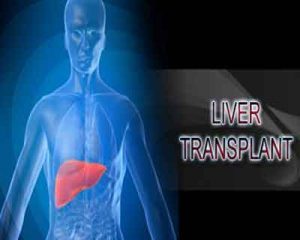- Home
- Editorial
- News
- Practice Guidelines
- Anesthesiology Guidelines
- Cancer Guidelines
- Cardiac Sciences Guidelines
- Critical Care Guidelines
- Dentistry Guidelines
- Dermatology Guidelines
- Diabetes and Endo Guidelines
- Diagnostics Guidelines
- ENT Guidelines
- Featured Practice Guidelines
- Gastroenterology Guidelines
- Geriatrics Guidelines
- Medicine Guidelines
- Nephrology Guidelines
- Neurosciences Guidelines
- Obs and Gynae Guidelines
- Ophthalmology Guidelines
- Orthopaedics Guidelines
- Paediatrics Guidelines
- Psychiatry Guidelines
- Pulmonology Guidelines
- Radiology Guidelines
- Surgery Guidelines
- Urology Guidelines
Apollo performs liver transplant to save student who ingested rat poison

Apollo Hospital gave a new lease of life to a 17-year-old school student, who had ingested rat kill poison in a suicide attempt, live donor liver transplantation. Dr Joy Varghese, Hepatologist and Liver transplant physician, and Dr Mohammed Nayeem, Unit Head, Liver Transplant Surgeon, saved the boy, hailing from Villupuram, by performing live donor liver transplantation within 36 hours of admission to the hospital, with the help of Tamil Nadu Health System Project and the Directorate of Medical Education.
In Tamil Nadu, as many as 25 percents of all deaths in 15-39 year age group were caused due to self-harm according to a report published by the Indian Council for Medical Research and the Ministry of Health and Family Welfare. In rural regions, poisoning due to pesticide ingestion accounts for four in 10 suicides making it the most common mode of suicide.
The suicide rate was high in villages as the country has a large agriculture sector and 60 percent of its population depends on farming for earning a livelihood. Many Indian farmers store their pesticides at home for easy reach, making it accessible for suicide.
Talking to reporters on Wednesday, Dr Joy Varghese said Ram (name changed), a class XI student, was brought to Apollo Hospitals here in an unconscious state with symptoms of poison ingestion early this month. The patient started to show symptoms only after four days of consuming the poison as was usually the case with rat kill poison. The emergency team of specialists put him on the ventilator and shifted the patient to liver ICU immediately.
Dr Joy Varghese said "rat poison contains multiple chemicals that work together to kill rodents. However, these substances are also lethal to humans if ingested.'' ''The presentation of symptoms and the time of its manifestation depends upon the amount of poison ingested. One of the rat poison effect on humans is in the form of liver failure. It may lead to coma, as a result of encephalopathy'', he said.
Noting that any buildup of toxins in the brain might result in brain damage and lead to serious consequences, he said it could also cause breathing difficulty, tightness in the chest and cough. Some people could also develop pulmonary edema, along with irregular heartbeat, cardiomyopathy, and weakening of the heart muscles. The liver damage reduces the clotting property of the blood, resulting in blood oozing out from all parts of the body'', Dr Joy said.
He said Ram was in need of emergency liver transplantation due to acute liver failure. He was initially subjected to Plasma exchange to reduce the toxic level of poison from the body which was performed for three to four hours for initial stabilization since his liver was completely damaged. A liver transplant was the only way out and his mother voluntarily donated 40 percent of her liver to save him. After a 10-hour long transplant procedure, the boy was saved.

Disclaimer: This site is primarily intended for healthcare professionals. Any content/information on this website does not replace the advice of medical and/or health professionals and should not be construed as medical/diagnostic advice/endorsement or prescription. Use of this site is subject to our terms of use, privacy policy, advertisement policy. © 2020 Minerva Medical Treatment Pvt Ltd